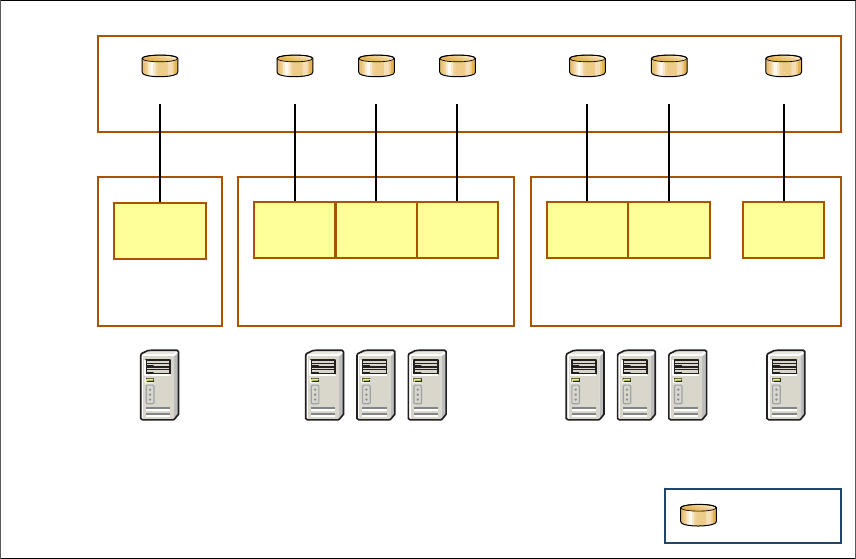Chapter 9. Managing data lifecyle with InfoSphere Warehouse 339
DB2 Workload Manager
DB2 Workload Manager (DB2 WLM) can be configured and used in
conjunction with storage group data tags to manage the resources assigned
to workloads that access data in a multi-temperature database.
For example, by creating a tag on a storage group, DB2 WLM can be
configured to assign a workload to a certain service subclass depending on
the storage group accessed, and then effect the resources and concurrency
rules applied to that workload. Using this approach you can change the
workload priority of a query based on the storage groups it touches. This
gives the administrator more control over queries that might access both hot
and cold data.
Temporal data
Creating a temporal table allows you to pass the processing task of
maintaining dimensional history over to the database engine. Deploying
temporal features for dimension tables further enhances your ability to
manage the data lifecycle, because temporal history data can be managed
separately from active data.
A change to a data row in a temporal table generates data in the associated
temporal history table. The temporal history table can be physically
implemented independently of the parent table. This means that it can be
partitioned, stored, and maintained (pruned) separately based on your
requirements.
For example, although a parent table might be range partitioned, a history
table with a smaller volume of rows does not have to be range partitioned,
correlating the maintenance effort with the table volume. Similarly, data can
be archived from the history table independently of the parent table.
Federated database
In situations where you need to archive aged or inactive data out of the
primary production database but retain data availability, you can migrate the
data to a federated database from where it can be referenced.
9.2.1 Using multi-temperatures features in a sample scenario
This section describes how to implement the concepts discussed to effectively
manage the cost of storage. The example uses a standard FACT table, which is
typically the largest table in a data warehouse.
The target environment has three distinct types of storage available to the
database which represent distinct cost groups for storage. The object of the
exercise as discussed in this chapter is to place data for the fact table on the
appropriate storage based on age. Figure 9-1 on page 340 shows the target


